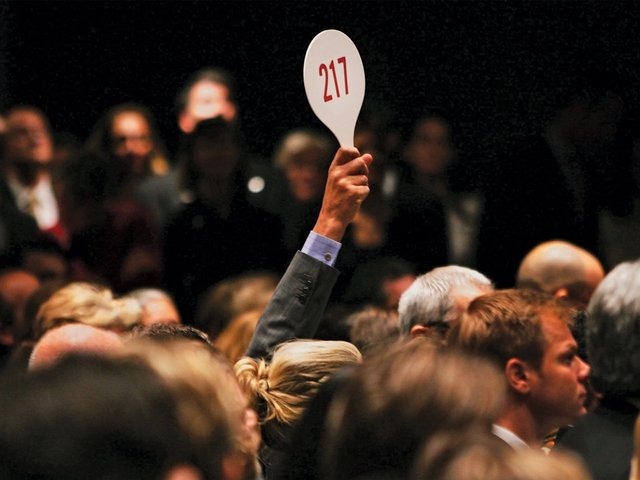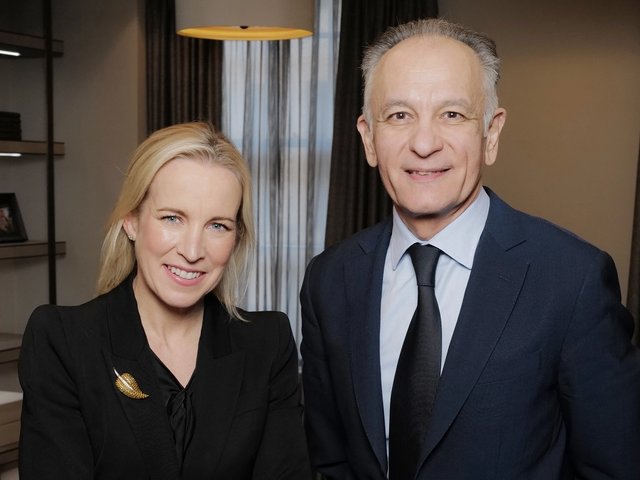It did not take long for François Pinault, the French billionaire, to reveal his hand with the auctioneers Christie’s. On 2 May, in the wreckage of Warburg’s failed effort to take the company private in a consortium take-over, he announced that he had obtained over 29.5% of the company through the purchase of the block of shares held by fellow billionarie Joe Lewis. On 11 May he met Christie’s chairman, Christopher Davidge and the board to sense their reaction, while giving away nothing of his own intentions. A week later he had tied up the purchase of the largest other block of shares, the 9% held by the SPO private investment trust of California and entered discussions with the Christie’s board who dispose of the votes of the other large block of 6% held by the Floyd family.
On 18 May Mr Pinault, through his holding company Artemis (in which he has 48% of the shares and 58% of the votes), issued an agreed offer for the whole company, valuing it at a price of £721 million, a level which few believe could fail. Even if someone else does come in they face a bidder with already towards half the shares under his belt.
That is Mr Pinault’s style, of course. The press, and his PR consultants, may present him as a white knight uniquely combining a passion for art (he is a notable collector of contemporary art as well as French “royal” furniture) with an interest in high quality brands. His real craft, however, has been as a deal maker.
At sixty-two, the self-made billionaire who started in his family lumber business in Brittany, has built his Pinault-Printemps-Redoute empire as a deal-maker in the style of Lord Hanson, Tiny Rowland and the big corporate raiders of America.
Backed always by Credit Lyonnais, he has used a combination of highly leveraged finance and top-level government contacts and support (he is an old friend of President Chirac) to take on companies like the Printemps retail group and La Redoute mail order and to gather brands such as Florsheim shoes and the Vail ski resort—both of which came through as US purchase of junk bonds.
The Christie’s purchase is typical of his determination. When he bought a shareholding early last month, it was essentially an opportunistic move, taking advantage of the failure of Warburgs to get together a consortium of private investors to take over the company. Although unsuccessful, this clearly allowed first, that Christie’s could be bought, and, second, that Mr Lewis, its largest shareholder, was ready to deal.
Having discovered from the reaction both at Christie’s and among its investors that there were no real obstacles to a bid, he moved with determination, buying up the biggest blocks and making an offer that no-one could refuse. At 396p per share it represented a premium of no less than 40% over the 282p price prevailing when Mr Pinault made his first move and perhaps 50p per share more than Warburgs had been considering.
No wonder Christie’s management agreed to support it in a weekend of talks. For a start, they stand to make small fortunes out of their share options if the deal goes through: £13.6 million in total, of which Chris Davidge, chief executive, and Lord Hindlip, chairman will make £1.9 million and £1.78 million respectively and Noel Annesley, deputy chairman, £5.4 million. Even if Christopher Davidge, who has worked his way up literally from the bottom (his father was a doorman at the auction offices), might have preferred his independence in better times, there was no way he was going to keep it once Warburgs had set the company into play at the beginning of the year. To be fair, there are sound reasons for Christie’s to prefer private ownership to public quotation. Burdened by an ownership in which nearly a third was held by one individual, Christie’s has been the subject of endless rumours and approaches for take-over.
At the same time, the changing nature of the auction business from pure agency to proprietorial—that is, taking the risks on their own books through guaranteed minimums and bought-in works—made it less attractive to the general investment community.
For those in the know, or early on the rumour grapevine, the moves in Christie’s shares each time there were bid suggestions and meant there was money to be made out of the auctioneer’s shares. For the ordinary investor, waiting on company announcements during the long months of uncertainty of the Warburg offer, there was only the misery of a share price that kept falling back below 300p, even after Mr Pinault was rumoured to have paid Mr Lewis 400p for his shares (he did, it turns out).
Private ownership, as Warburgs had argued early on, makes far better sense for a business which has become more and more a matter of dealing between sellers of expensive collections and rich buyers. Sotheby’s which returned to private ownership years ago, sees it job more and more as a risk taker on its own account. It has moved into the purchase of dealerships and the increasing provision of finance, climaxing with the announcement last month of the establishment of a financial business, Sotheby’s Ventures, to offer loans to dealers to buy art in return for a share in the profits when the object is sold.
That raises all sorts of problems of potential conflicts of interest. How do sellers or buyers know that the auction house is not manipulating the sale for its own advantage? But for the auction house itself, dependent more and more on the turnover of selling large collections, it makes sense.
In these terms, François Pinault can present himself as the perfect combination of a man who can take those risks, and knows how to, and who also knows all about art.
Whether he will prove quite as arms-length and benign an owner as he has promised to the Christie’s management remains to be seen. His offer price is clearly aimed at shutting out alternative buyers. But at an historic multiple of twenty-six times earnings, it values Christie’s far higher than the market believes it is worth.
Even assuming Mr Pinault’s company can up the return by cost-cutting (and where will that leave the present management?) and by developing a financial and dealing business around the trade-mark, it is almost impossible to see the company ever earning that kind of return. The market could rise. France and Europe is opening up under EU competition policy. But the art market is already experiencing a boom—aside from Asia—and the stock market has already taken Europe into account. Nor is France so big a market that Mr Pinault’s influence in it could change the face of Christie’s
Mr Pinault has so far made his money, and his reputation, taking over well-known companies which have fallen on hard times in over-competitive markets, reducing their costs, selling some of their assets, and then either keeping them as a cash earner or selling them at a capital profit.
But Christie’s is not in the same situation. In desperate competition for leadership of what is now a global market it needs strategic sense and greatly increased resources.
On the optimistic side, Mr Pinault could provide just this—using Christie’s less as a profit centre in its own right than the key vehicle in a steady accumulation of high-quality brands.
On the more pessimistic side, he may aim at cutting costs to boost returns and fail the strategic test. The enthusiasm of the French art trade for his purchase is already an indication that France would see him as their own national response to the loss of so much business to London and New York. He is bound to come under pressure to act as such.
Sure he is a collector (mostly of the big names such as Mondrian, Pollock and Warhol). Sure he is a wealthy man with connections among the wealthy and a businessman who knows dealing. But that may be as much a recipe for interference as support. That is the problem with being owned by a rich and powerful man with views, and vanity, of his own.
Originally appeared in The Art Newspaper as ‘Christie’s falls to the French'



